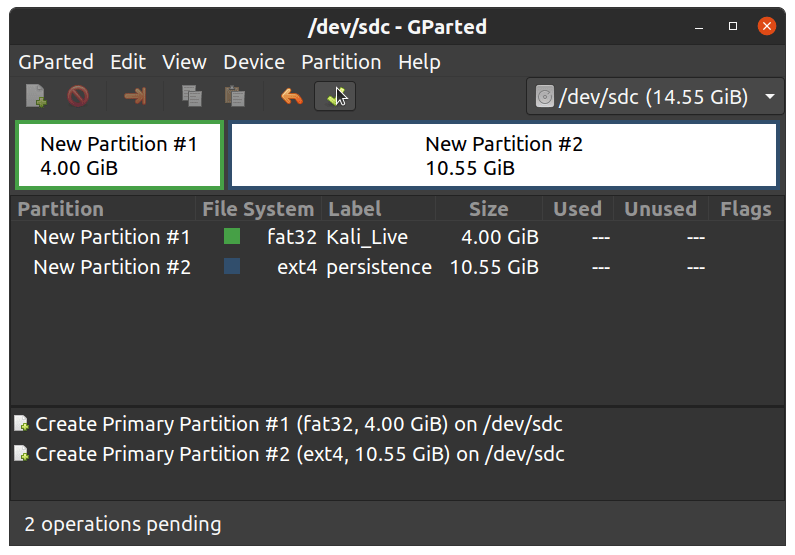

- #Kali linux usb boot mac persistence how to
- #Kali linux usb boot mac persistence update
- #Kali linux usb boot mac persistence password
- #Kali linux usb boot mac persistence Pc
- #Kali linux usb boot mac persistence iso
🙂 Have to search out some more of your stuff… cheers Still trying to figure out the "failed to set console font and keymap" at start-up. When it started this time, the folder is on the Desktop and the saved text is in the Documents folder. Then shut down and booted into Kali (from the usb). Saved that command on a text and saved to documents. Anyhow, then used sudo systemctl restart rvice. Shut the windows machine down and re-started from usb again. Booted up, but the image of the terminal window wasn't in Pictures folder. After restarting, I'm getting a failed to set font and keymap…(hmm, that doesn't sound too serious). Rather took a screenshot of terminal window. Followed your above directions and also read the comments. **newest kali linux build on 512 gig usb device. Make sure to replace sbd2 with your own persistence partition, otherwise you might overwrite data accidently. Cryptsetup / LUKS EncryptionĬryptsetup is a utility used to conveniently set up disk encryption using LUKS Encryption.Īs my persistence partition is sdb2, the commands below will reflect that. If you are unsure where your persistence partition is, paste the results of fdisk -l in the comments below and I will try to assist (lower case L, not number 1).
#Kali linux usb boot mac persistence update
These will be different for everyone, so make sure you correctly identify the persistence partition for your particular hardware configuration and update the commands below to match. My partitions are listed here as sbd1 and sdb2, however, depending on your hardware configuration, these may appear as sdc1, sdc3, etc. In the above example, I can see my 4GB persistence partition that I created in Rufus in Step 2. It should have two partitions: One that stores the Kali Linux 2021 operating system, and another persistence partition, which you created earlier. It’s very important that you identify your persistence partition correctly as we are going to overwrite it.

You may see several entries for devices and partitions listed here. Open Terminal and use the root account with:
#Kali linux usb boot mac persistence Pc
Reboot the PC and select Live USB Encrypted Persistence and press ENTER.

If you currently have files and settings stored on the persistence partition, you must back them up before continuing with this process. If you want to protect your persistence partition with a password, you can do so with luksEncryption.īe warned, this process will overwrite your current persistence partition. Kali Linux 2021 Live Encryption (Optional) Note: From now on, every time you boot from USB, you must select Live USB Persistence in order for persistence to work correctly. To test if persistence is working correctly on Kali Linux 2021, try creating an empty test folder on the Desktop and restarting. Select Live USB Persistence and if the test folder is still there, persistence is working correctly.
#Kali linux usb boot mac persistence password
For Kali Linux 2019 and below, the default user is “ root” and the password is “ toor”. However, if you do get a password prompt, the default username and password in Kali Linux 20 is “kali”. The menu may look slightly different depending on your version of Kali. In the Kali boot menu, select Live USB Persistence and press ENTER. When the PC reboots, you should be presented with the Kali Linux 2021 Live boot menu. Repeatedly pressing one of the function keys ( F12, F2, etc) or the ESC or Delete keys on bootup will invoke the boot or BIOS menus on some machines, where you can select USB as the boot device.
#Kali linux usb boot mac persistence how to
If this doesn’t work either, you may need to do some searching on how to boot from USB on your particular machine. If this doesn’t work and the PC boots straight back into Windows, hold down the SHIFT key while clicking Restart in the Windows start menu and select Boot from USB. On some PCs, you can simply restart the machine, and if the USB is plugged in, it should boot to Kali Linux 2021 Live automatically.
#Kali linux usb boot mac persistence iso
It may take 10-30 minutes to write the Kali Linux 2021 Live ISO to USB depending on your hardware and size of USB. If you see a warning about Syslinux, click Yes.


 0 kommentar(er)
0 kommentar(er)
